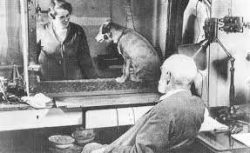Sixth Form Student of the Week
Lauren Coleman 13A Lauren is another of our fantastic Year 13 students. She is always hard working and shows dedication to her studies; making excellent use of her study periods....
Filter by Category
Filter by Author


























































































































































































Lauren Coleman 13A Lauren is another of our fantastic Year 13 students. She is always hard working and shows dedication to her studies; making excellent use of her study periods....
Posted by Giles Monks

Calum Walsh 13 Elm Calum is one of our outstanding Year 13 students. He has proved a fantastic ambassador for the school helping Mrs Jackman by taking visitors on tours around the...
Posted by Giles Monks

Year 13 psychology students were fully engaged during our recent Drop Everything And Read event on Wednesday. They read more deeply about Pavlov’s famous study into conditioning...
Posted by Gabriela Zhelyazkova

Bushey Meads to Oxbridge This year, year 13’s ambition and motivation stood out as the year with the most Oxbridge applications so far in BMS history! The sixth form common...
Posted by Gabriela Zhelyazkova

Last week, we had some of our wonderful Sixth Form students helping out with our preparations to support the NHS colleagues who delivered Covid vaccines available for students....
Posted by Giles Monks

Khushi Aggarwal 12 Willow An excellent student, Khushi is working extremely hard in all her subjects. She is always willing to support her peers and the staff at Bushey Meads...
Posted by Des Timotheou

Verity Alcorano 12 Sycamore Verity is one of our new to school students joining us in our outstanding Sixth Form. She has settled in very well and is enjoying her time here,...
Posted by Giles Monks

Sophie Edwards 12 Sycamore 15/9/21 Sophie is working really hard in all her subjects and has shown an excellent attitude to learning in the Sixth Form Study rooms. Always focused...
Posted by Giles Monks

As part of our Bridging Fortnight the Sixth Form Team organised a series of sessions tailored to support our new Year 12 students develop the study skills and positive approach to...
Posted by Giles Monks

I would like to commend all our existing Year 11 students, as well as those who have joined us for the first time as ‘new to school’ students, for the way that they...
Posted by Jeremy Turner
|
Lauren Coleman |
13A |
Lauren is another of our fantastic Year 13 students. She is always hard working and shows dedication to her studies; making excellent use of her study periods. Lauren’s conscientious and independent attitude to her learning is impressive. We wish her all the very best in her future studies this year. |
|
Arasan Premsankar |
13 |
Arasan was successful in being selected for a PricewaterhouseCoopers work experience event. He attended the first session earlier this week and found it both challenging and inspiring. He is looking forward to attending another session in the near future. Well done Arasan |

It was a real pleasure to attend a very successful Year 7 Celebration Evening on behalf of the Humanities and Social Sciences faculty, Thursday 21st October and to see so many...

Are you or anyone you know (family / friends / community members) able to support students at Bushey Meads School with work experience and careers related activities this year?...